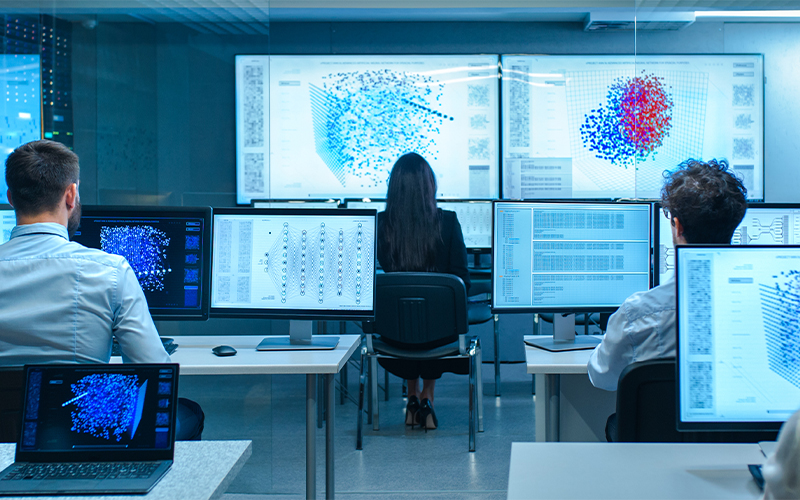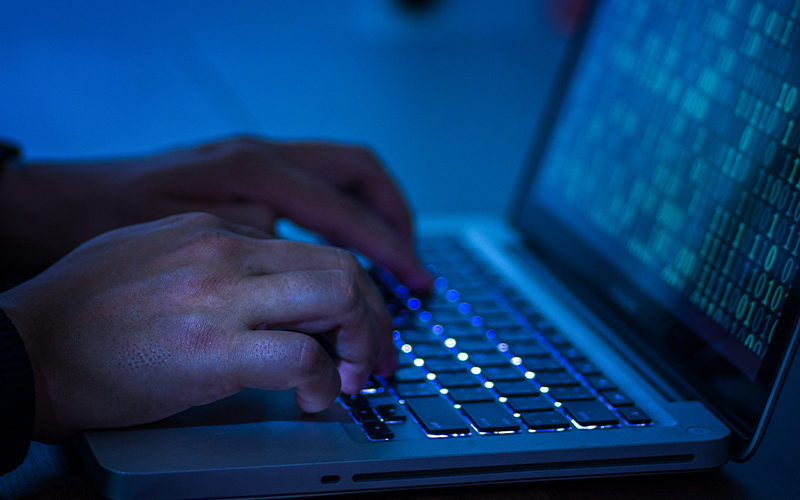BPM Analytics
Tracking the Cybercriminal with Digital Forensics
Digital forensics, a branch of forensic science that uses technology for detecting cybercrimes and supporting cyber crime investigations, has been receiving a lot of attention lately. This is because of the increasing instances of cybercrimes globally. Data reveals that in the past year, businesses suffered a loss of $1,797,945 per minute due to cybercrime! These are figures that cannot be taken lightly, especially for organizations needing effective digital forensics solutions.
With the advancements in technology, especially in digital transformation, cloud computing, and IoT systems, there has been a thrust for businesses across the globe to shift to a digital domain. This shift has, unfortunately, led to an increase in cybercrime in the digital realm. Cybercrimes may be cyber threats that are malicious acts to damage or steal digital data. Cyber threats may be in the form of computer viruses, malware, data breaches, Denial of Service (DoS) attacks, and more. A successful cyber threat is a cyber-attack. A cyber-attack aims to gain unauthorised access, damage, disrupt, or steal an information technology asset, disrupt a computer network, or damage intellectual property, necessitating an effective cyber incident response and digital forensic investigation incident response process. Data on cybercrimes reveals that cyber criminals can penetrate 93% of company networks. Therefore, professional digital forensics services has become an essential technology. Moreover, with rising concerns, individuals are often seeking how to check cybercrime complaint status online to ensure timely resolution and action in the wake of such attacks.
Digital forensics technology is used to track the “digital fingerprint” left behind after the occurrence of cybercrime, using advanced evidence collection tools. Digital forensics entails the identification, preservation, analysis, and documentation of cybercrime digital evidence that can be presented in a court trial. The data is extracted from digital devices such as computers, mobiles, hard disks, IoT devices, and cloud platforms by expert digital forensic investigators.
In addition to these tasks, individuals and organizations may also want to know how to check their cybercrime complaint status or investigation progress online, especially when the investigation involves recovering deleted files, cracking passwords, or tracking security breaches using advanced digital forensic techniques.
Some types of cybercriminal activity and cybercrime cases criminal activity that can be investigated using digital forensics include:
- Cyber attacks
- Industrial espionage
- Data security breach
- Financial fraud
- Identity fraud
- And a host of other criminal activities.
Digital Forensics Investigators analyse threats by collecting evidence such as:
- Time spent by an individual on a webpage.
- The time when they were actively using the internet can be crucial for a forensic investigation.
- Type of device used.
- And other unique digital footprints that enable digital investigators to retrieve crucial forensic data for solving the case.
These are the digital fingerprints that enable the digital investigator to retrieve critical data for solving the case.
Digital Forensics has gained importance in the following areas:
Cloud Forensics
Cloud computing offers benefits but comes with increased cybercrime risks like cloud data breaches and unauthorized access, making cloud forensics essential. Most businesses use cloud computing services extensively, which can be analyzed using digital forensics tools. Several documents, products and services pass through the cloud all the time. Cloud computing is now an integral part of operations in both private and government sector organisations, where forensics involves ensuring data integrity and security. One of the main drawbacks of cloud computing is its security. Cybercrimes in the cloud environment are increasing at a rapid rate, making it essential to employ digital forensics experts. This has led to the development of cloud forensics. This branch of digital forensics technology investigates cybercrimes in a cloud-based environment.
Digital data is processed, and cloud attacks are reconstructed, investigated, and analysed.
Social Media Forensics
Social media is a rich source for digital forensic investigations into social media cyber breaches, malware, and account hacking. In recent years, social media platforms have become a hub for socialisation, but they also serve as a rich source for computer forensics. Users create accounts, share a lot of information, and have interactions with other users through these sites, making them a target for digital forensics experts. Each such interaction involves exchange of digital data. This provides hackers with a great opportunity to exploit the accounts of users, which can be investigated using computer forensics.
Popular social media applications like Facebook, Instagram, LinkedIn, and Twitter are vulnerable to cyber threats and malware, prompting the need for computer forensic investigations. Cyber-attacks on social media can occur within the network or outside the network, necessitating the use of forensic techniques to identify the source.
Social media forensics investigates cybercrime on social media channels. Social media posts are analysed as evidence in social media forensics. Digital footprints on social media platforms reveal information that points to offenders, aiding forensic investigations. Advances in digital forensic technology have increased the efficiency of social media forensics investigations.
IoT Forensics
The rise of IoT devices increases vulnerability to cyber threats such as ransomware, DoS attacks, and massive data breaches, highlighting the importance of IoT forensics. The Internet of things is a rapidly growing technology because of the benefits it offers. Some of the common IoT devices are smartphones, tablets, laptops, PCs, and a host of other embedded devices. IoT facilitates sharing of data across multiple platforms, communication via the internet APIs or directly, which can be monitored by computer forensic tools and techniques. IoT devices can also be controlled by cloud servers. These aspects of IoT systems make them vulnerable to cyberattacks like mass monitoring, ransomware, Denial of Service (DoS), and more highlighting the need for network forensics. IoT systems also contain large volumes of data making them vulnerable to a data breach that can be addressed through forensics helps.
Digital forensics investigators use data from IoT systems in conjunction with digital forensics techniques to track and even prevent cyber-attacks in the IoT environment.
The Growing Importance of Digital Forensics in Addressing Cyber Crime Complaint Status
The global digital forensics market is expanding rapidly due to the rise in cybercrime complaints, regulatory compliance needs, and reliance on forensic software for cyber attack investigation. Digital forensics has advanced from addressing minor computer crimes to investigating international criminal cases that affect the world. Its role in cyber crime investigation has become indispensable, with organizations increasingly relying on forensic techniques to identify, trace, and mitigate cyber threats effectively. Increased use of embedded technologies, social media, cloud, etc., coupled with stringent government regulations, and increased instances of cybercrimes are prime movers for the rising demand for digital forensics software. This is the reason why The Global Digital Forensics Market is expected to grow at a CAGR of 10.97% from 2021 to 2026, as organizations increasingly rely on forensic techniques to protect their computer systems.
If you want to protect your business against cyber threats, track cybercrime complaint status, or require expert digital forensics investigation services, contact us today! Sign up for our newsletter, fill out the inquiry form, or call us to schedule your free consultation with cybersecurity experts.
For organizations on the digital transformation journey, agility is key in responding to a rapidly changing technology and business landscape. Now more than ever, it is crucial to deliver and exceed on organizational expectations with a robust digital mindset backed by innovation. Enabling businesses to sense, learn, respond, and evolve like a living organism, will be imperative for business excellence going forward. A comprehensive, yet modular suite of services is doing exactly that. Equipping organizations with intuitive decision-making automatically at scale, actionable insights based on real-time solutions, anytime/anywhere experience, and in-depth data visibility across functions leading to hyper-productivity, Live Enterprise is building connected organizations that are innovating collaboratively for the future.






